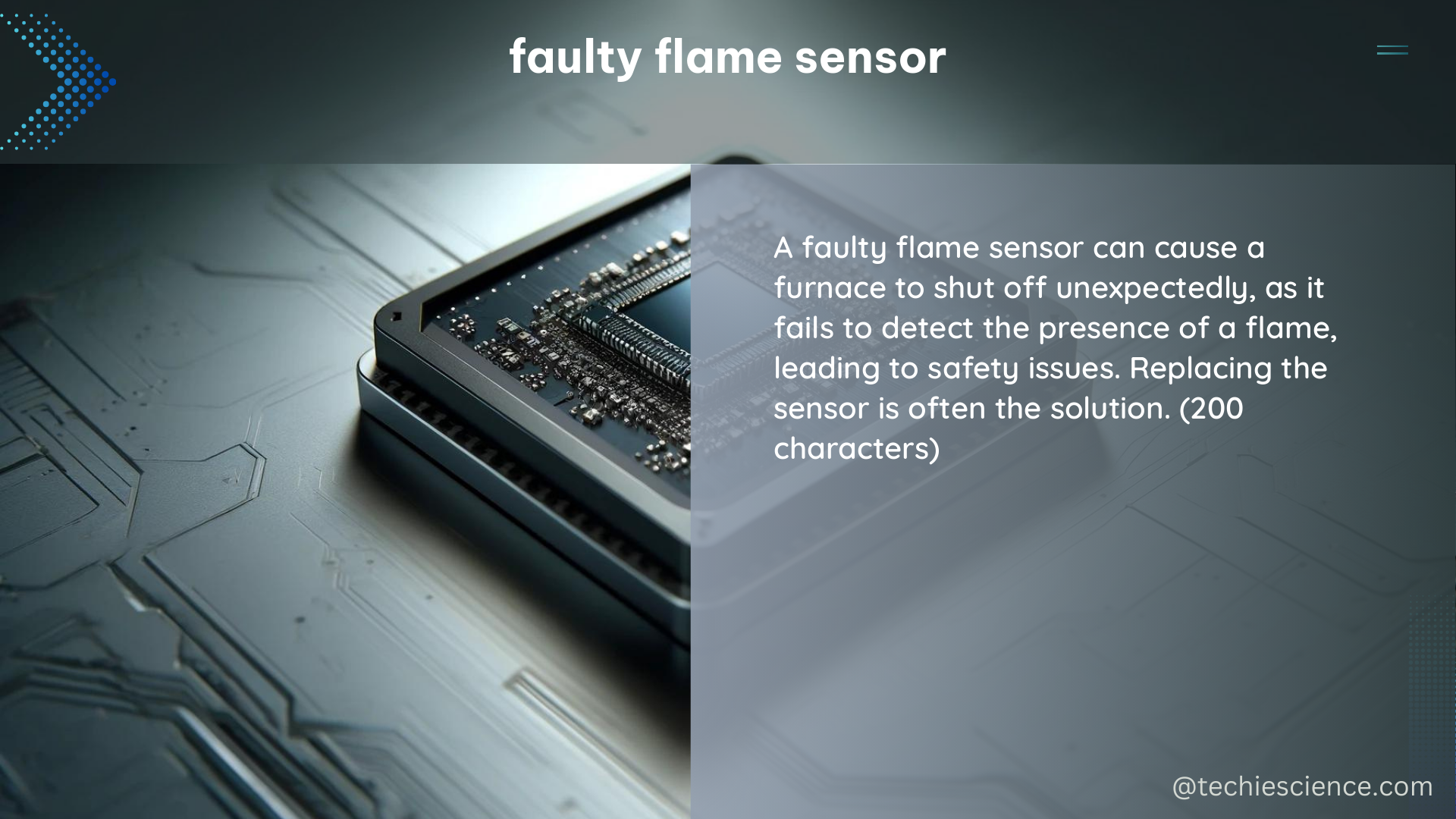A faulty flame sensor is a critical component in various systems, including gas appliances and aircraft fuel tanks, that can lead to severe consequences if not addressed promptly. The flame sensor’s primary function is to detect the presence of a flame and ensure the safe operation of the system. When it malfunctions, it can lead to incomplete combustion, increased emissions, and even the risk of an explosion in extreme cases.
Understanding the Importance of Flame Sensors
Flame sensors are essential safety devices in various industries, including:
-
Gas Appliances: In gas-powered appliances, such as furnaces, water heaters, and stoves, the flame sensor is responsible for detecting the presence of a flame and ensuring that the gas supply is shut off if the flame is extinguished. A faulty flame sensor can lead to incomplete combustion, increased emissions, and the risk of a gas leak or explosion.
-
Aircraft Fuel Tanks: In aircraft fuel tanks, the flame sensor plays a crucial role in monitoring the fuel tank environment and detecting potential ignition sources. The SAFER data presented to the FAA in 1978 highlights the importance of evaluating fuel tank safety in both operational and post-crash conditions, including the threat of fuel tank explosion due to internal and external tank ignition sources.
-
Industrial Processes: Flame sensors are also used in various industrial processes, such as boilers, furnaces, and kilns, to ensure the safe and efficient operation of these systems. A faulty flame sensor can lead to incomplete combustion, reduced efficiency, and increased emissions.
Diagnosing a Faulty Flame Sensor

To diagnose a faulty flame sensor, you can follow these steps:
1. Visual Inspection
Carefully inspect the flame sensor for any visible signs of damage, such as:
- Cracks or physical damage
- Corrosion or discoloration
- Loose connections or wiring
2. Continuity Test
Use a multimeter to check the continuity of the flame sensor. A faulty flame sensor may have an open circuit, which can be detected by the multimeter.
- Set the multimeter to the continuity or resistance setting.
- Disconnect the flame sensor from the appliance or system.
- Touch the multimeter probes to the terminals of the flame sensor.
- The multimeter should display a low resistance value (typically less than 1 ohm) if the flame sensor is in good condition.
- If the multimeter displays an open circuit (infinite resistance), the flame sensor is likely faulty and needs to be replaced.
3. Resistance Test
Measure the resistance of the flame sensor using a multimeter. A healthy flame sensor should have a specific resistance value, typically in the range of 10-100 ohms.
- Set the multimeter to the resistance (Ω) setting.
- Disconnect the flame sensor from the appliance or system.
- Touch the multimeter probes to the terminals of the flame sensor.
- The multimeter should display a resistance value within the expected range.
- If the resistance value is outside the expected range, the flame sensor may be faulty and needs to be replaced.
4. Replacement
If the flame sensor is found to be faulty, replace it with a new one that meets the original equipment manufacturer’s (OEM) specifications. Ensure that the replacement flame sensor is compatible with the appliance or system and that it is installed correctly.
Preventing Flame Sensor Failures
To prevent flame sensor failures and ensure the safe and efficient operation of your systems, consider the following measures:
-
Regular Maintenance: Implement a regular maintenance schedule to inspect, test, and clean the flame sensor. This can help identify and address any issues before they lead to a complete failure.
-
Environmental Monitoring: Monitor the operating environment of the flame sensor, such as temperature, humidity, and exposure to corrosive substances. Ensure that the flame sensor is installed in a suitable environment that meets the manufacturer’s specifications.
-
Proper Installation: Ensure that the flame sensor is installed correctly, with proper wiring and connections, according to the manufacturer’s instructions. Improper installation can lead to premature failure or reduced performance.
-
Fuel Quality: In the case of gas appliances, ensure that the fuel quality meets the manufacturer’s specifications. Poor fuel quality can lead to incomplete combustion, increased emissions, and premature wear of the flame sensor.
-
Prognostic Monitoring: Implement advanced surveillance, diagnostic, and monitoring systems, as discussed in the IAEA Nuclear Energy Series, to detect and predict flame sensor failures before they occur. This can help prevent catastrophic failures and ensure the safe and efficient operation of your systems.
By following these best practices, you can proactively address and prevent flame sensor failures, ensuring the safe and reliable operation of your systems.
Reference:
- Fuel Tank Inerting for Transport Airplanes
- JCIDS Manual 30 October 2021 – DAU
- IAEA Nuclear Energy Series Advanced Surveillance, Diagnostic and Monitoring Systems

The lambdageeks.com Core SME Team is a group of experienced subject matter experts from diverse scientific and technical fields including Physics, Chemistry, Technology,Electronics & Electrical Engineering, Automotive, Mechanical Engineering. Our team collaborates to create high-quality, well-researched articles on a wide range of science and technology topics for the lambdageeks.com website.
All Our Senior SME are having more than 7 Years of experience in the respective fields . They are either Working Industry Professionals or assocaited With different Universities. Refer Our Authors Page to get to know About our Core SMEs.